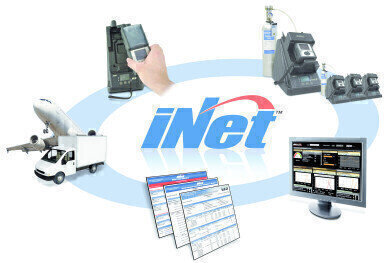Gas Detection
How Gas Detectors Provided the Ultimate Solution for a Large Chemical Company
May 22 2013
Having been impressed at a gas detection awareness seminar hosted by a1-cbiss (UK), the Health & Safety Manager from a large chemical company based in North Wales later contacted a1-cbiss to find a solution to hazardous gases present on site.
Safety onsite is number one priority. The main role of the Health & Safety Manager is to protect the wellbeing of personnel. Onsite, there are three hazardous areas where permits apply that instruct personnel to wear personal gas detection.
Most of the areas that require personal gas detectors to be worn fall under the Confined Space Entry Regulations. Storage tanks, silos and vessels emit Carbon Monoxide (CO) which provides a danger to those entering these areas. Gas detection needs to take place prior to entry to ensure that it is safe to enter.
The chemical company contacted a1-cbiss because their previous gas detection supplier’s equipment was unreliable and didn’t give them confidence that warnings would be provided should hazardous gases reach OEL’s. They had no way of knowing whether the instruments had been turned off by site engineers during alarm. All alarms need to be reported so that the Health & Safety Manager can investigate and document occurrences.
a1-cbiss were interested to understand the inconveniences that they encountered with their previous gas detectors. The Health & Safety Manager explained that it was frustrating not knowing whether all gas detectors were responding to present gases or whether each employee was using the detectors correctly.
During maintenance shutdowns, engineers and contractors are required to wear gas detectors at all times. The Health & Safety Manager would frustratingly spend many hours trying to locate failed detectors. Extra gas detectors would be hired to cover events of failure.
a1-cbiss suggested that the Industrial Scientific iNet program would be the ultimate solution. A combination of diffused and pumped Ventis gas detectors were ordered. These should be placed on a docking station at the end of every shift for recharging, bump tests, monthly automatic calibration and predictive analysis.
iNet continually tracks sensor performance via online software to check for sensor drift. If a gas sensor performance is found to be reducing, Industrial Scientific send an email notification then dispatch a replacement gas detector instead of having to send instruments away or to even replace the sensors on site.
iNet was a perfect solution for the chemical company as the Health & Safety Manager now has the confidence in the gas detectors. They are able to track when the detectors go into alarm and whether or not the engineers have followed the safety procedure. As the detectors are docked at the end of the shift, any settings that have been changed during the shift will be automatically reset.
Digital Edition
IET 34.2 March 2024
April 2024
Gas Detection - Biogas batch fermentation system for laboratory use with automatic gas analysis in real time Water/Wastewater - Upcycling sensors for sustainable nature management - Prist...
View all digital editions
Events
Apr 22 2024 Hannover, Germany
Apr 22 2024 Marrakech, Morroco
Apr 23 2024 Kuala Lumpur, Malaysia
Apr 23 2024 Kintex, South Korea
Apr 23 2024 Edmonton, AB, Canada


















